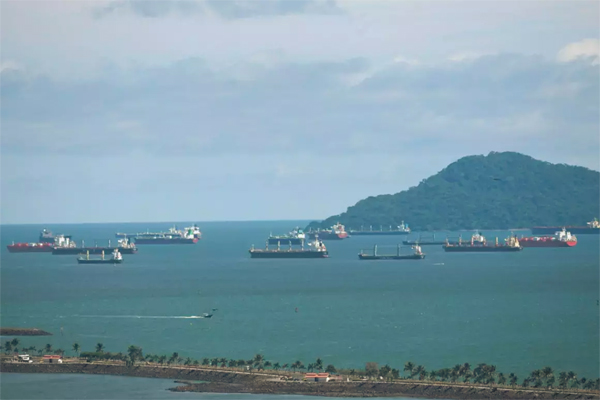
Kristen Hays and Guilherme Baida, S&P Global Platts
HOUSTON/SAO PAULO
EnergiesNet.com 12 24 2023
US resin exporters are increasingly monitoring fallout from reduced transits through the Panama Canal in an effort to conserve water amid a lack of rain, market sources said.
Some traders have seen delays in shipments to West Coast South America markets from Houston, home to the second-largest petrochemical port in the world which handles 73% of US Gulf Coast container traffic.
Resins and plastics made up more than 40% of those containerized exports in 2022, according to port data.
“We are seeing some delays to ship cargo to South America,” a market source said referring to west coast markets such as Peru and Chile. “Vessel schedules are constantly changing.”
So far container shipping lines have had priority, though larger ships have not been able to transit the canal fully loaded since the Panama Canal Authority reduced its draft to 44 feet from 50 feet in January.
A trader source said shipments of containers, largely to Asia, have not had issues so far given that priority, “but this could change if the matters get worse.”
Fresh water critical to canal operations
The canal, that connects the Pacific Ocean to the Atlantic, operates with a system of locks that raise ships from sea level to the level of Gatun Lake, a man-made basin that that is 85 feet above sea level. That lake and others at lower levels supply fresh water to raise and lower ships, and the canal cannot operate without it.
The lakes depend on rainwater, and a longer than normal dry season coupled with a shorter than normal rainy season has reduced that supply. The Panama Canal Authority (ACP) in September reduced the draft to 44 feet from 50 feet and later began limiting transits, as each transit uses tens of millions of gallons of fresh water.
According to the ACP, about 70% of container ships that transit the canal need a 44-foot draft. If the draft is further reduced, some ships would have to lighten loads before moving through the canal.
The ACP has sought to maintain that 44-foot draft by reducing transits. In late October daily reservation slots were cut to 32 from 36, which were gradually limited to 24 in November and then 22 Dec. 1. Slots will be further reduced to 20 on Jan. 1 and to 10 on Feb. 1, according to the ACP.
Latin American sources said the increasing limitations are expected to exacerbate already long wait times for transit to deliver volumes to WCSA markets. Delays could stretch up to three weeks, particularly with further slot limits imposed in early 2024.
Global logistics provider Katoen Natie has a polyethylene packaging warehouse in Dallas with 500,000 mt/year of capacity. That operation receives resin via rail car for packaging, which is loaded onto containers bound via Union Pacific for Los Angeles and Long Beach ports for export.
KTN president Frank Vingerhoets said the Panama Canal issues have not prompted shippers to move more PE to KTN’s Dallas operations. The company’s January forecasts do not show dramatic changes either.
However, another trader source said Dec. 19 that some export resin containers with already packaged material had been sitting at the Port of Houston for about four weeks awaiting transport to southern California, but have been held up by railroad congestion.
US Customs and Border Patrol on Dec.18 shut rail crossings at Eagle Pass and El Paso, Texas, to shift workers to other crossings, citing a surge in migrant crossings into the US.
Union Pacific urged the same day that the crossings be reopened immediately, as those two locations represent 45% of the railway’s cross-border business and other crossings lack the capacity to reroute that traffic.
The closures also have affected BNSF, which Dec. 18 told customers it will not accept new shipments and trains already enroute would be staged until the gateways reopen.
“Each shipping company has their own issues, but overall cargo is moving to South America at a slower pace,” a trader source said.
South America received 16% of 10.2 million mt of US polyethylene, polypropylene and polyvinyl chloride exported in 2022. In the first 10 months of 2023, South America received 13.2% of 10.4 million mt of those three resins exported, according to US International Trade Commission data.
Freight rates seen possibly rising
Market participants also are watching freight rates amid the slowdown.
For 2024, freight rates from Asia were expected to hold at an average of $100/mt from North Asia to Latin America, far below 2021’s record highs, when values surpassed the $500/mt.
US container rates averaged $50-$60/mt during 2023 for Brazil, the West Coast South America and Mercosur regions, around half of Asian values.
Sources said Latin buyers could seek Asian material, which could prompt US resin rate cuts with new North American capacity for PE and polyvinyl chloride ramping up or coming online in 2024.
spglobal.com 12 21 2023












